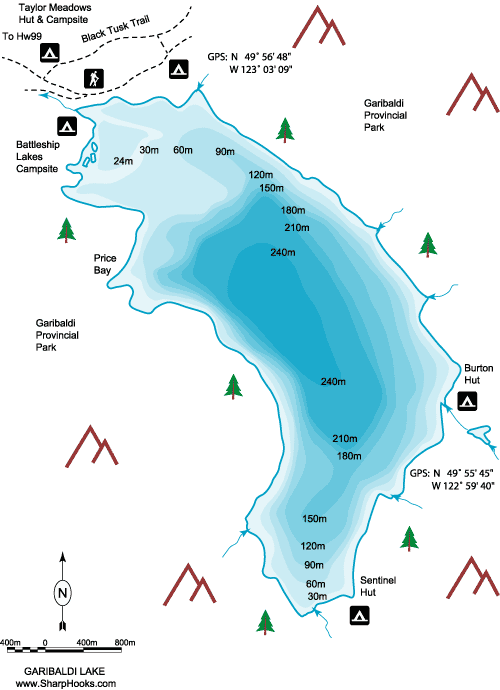
This task makes us determine the volume of the lake and it’s surface area, as well as how much water the Barrier contains behind it in the lake, and finally what would happen is the Barrier faulted.
Volume:
First off, to calculate the volume of the lake I stated that the lake from an eagle eye point-of-view seems to form a rectangular shape so I can use the surface area () multiplied by the average depth (
) since we cannot use the actual shape of the lake except, just estimate it to be a rectangle with equal the volume of the lake.

Amount of Water:
Now, to determine the amount of water the Barrier contains behind it you must use the volume of the lake and convert it to or
. I chose to covert the volume of the lake from the previous question above and then to covert the volume to litres.

If the Barrier Faulted:
Finally, if the whole barrier faulted, exploded, broke down, collapsed, etc… We would assume the barrier is to be at the same level as the maximum depth of the lake, making the lake greater in height at this moment then the barrier – the only reason the lake doesn’t overflow is because the remaining water goes through other rivers and lakes to disperse evenly.; however, since the lake has a greater height () then the barrier (
) then all water in the lake will rush down the mountain. The water would flood the towns of Garibaldi and Squamish, then an impact-wave could affect Howe Sound and even maybe Vancouver Island. The amount of water to escape would be significant, because the barrier is shorter in height so it allows all the water to escape if the whole barrier faulted, which would be:
. The power of the water rushing down the mountain would be
. I determined this calculation because I converted the
to
by converting the volume of water to
, using the gravitational acceleration, and inputed all this into an online converter to allow me to find the force.

For the equivalency of force/power I represented the weight of the water to the richter scale and the comparison to a tsunami/earthquake. I believe it would classify as a category ten because a category ten catostrohpe is and this is demonstrated in the photo below under “Energy Release”. As well as, I found an article stating that,“The potential energy at 1,400 metres elevation, of 1 trillion litres of water, is 200 times the energy released by the bomb on Hiroshima.” Which is unbelievable and unimaginable to create and describe the damage that would be done.

In conclusion all these results and calculations are assumptions and estimations for the force/power, volume of the lake, amount of water, etc.
Sources:
https://en.wikipedia.org/wiki/Garibaldi_Lake
https://en.wikipedia.org/wiki/The_Barrier
http://www.leelau.net/sharonandlee/flightseeing-the-coast-mountains/
http://www.sharphooks.com/tripplanner.aspx?subpage=lakeinfo&lake=garibaldi+lake&lakeid=40
https://www.easycalculation.com/physics/classical-physics/force.php
http://www.squamishchief.com/news/garibaldi-lake-a-ticking-time-bomb-1.1753732
https://www.quora.com/What-is-the-equivalent-of-a-earthquake-rating-2-on-the-Richter-scale
http://www.sms-tsunami-warning.com/pages/richter-scale